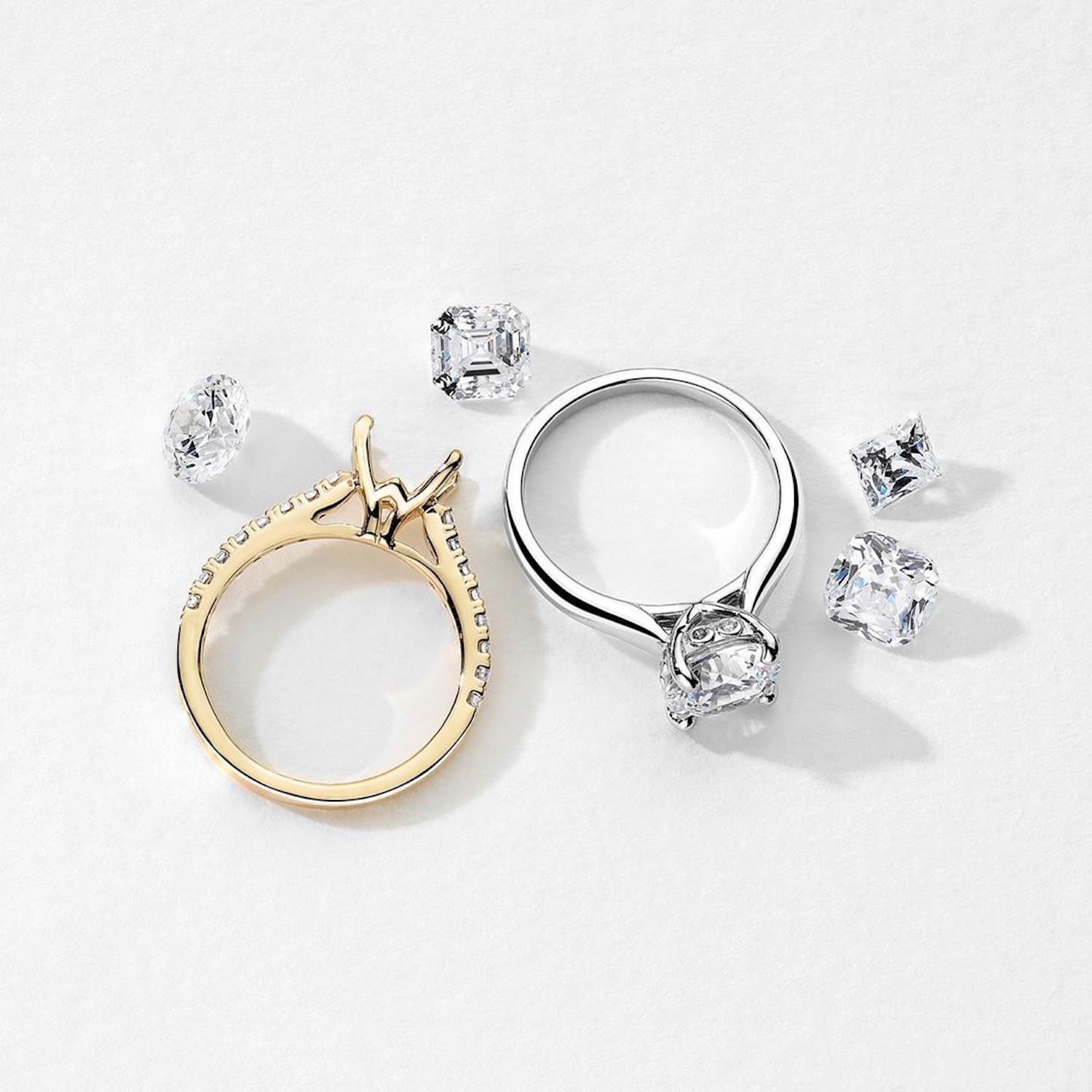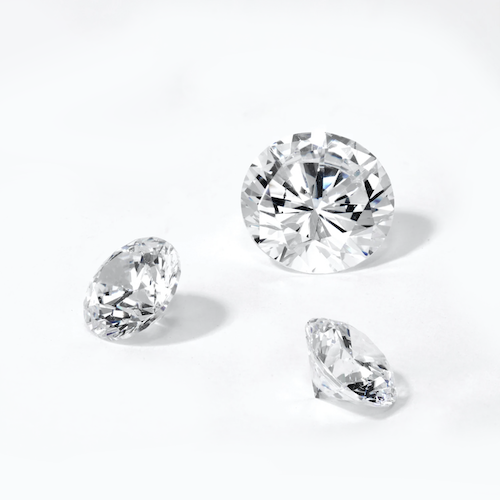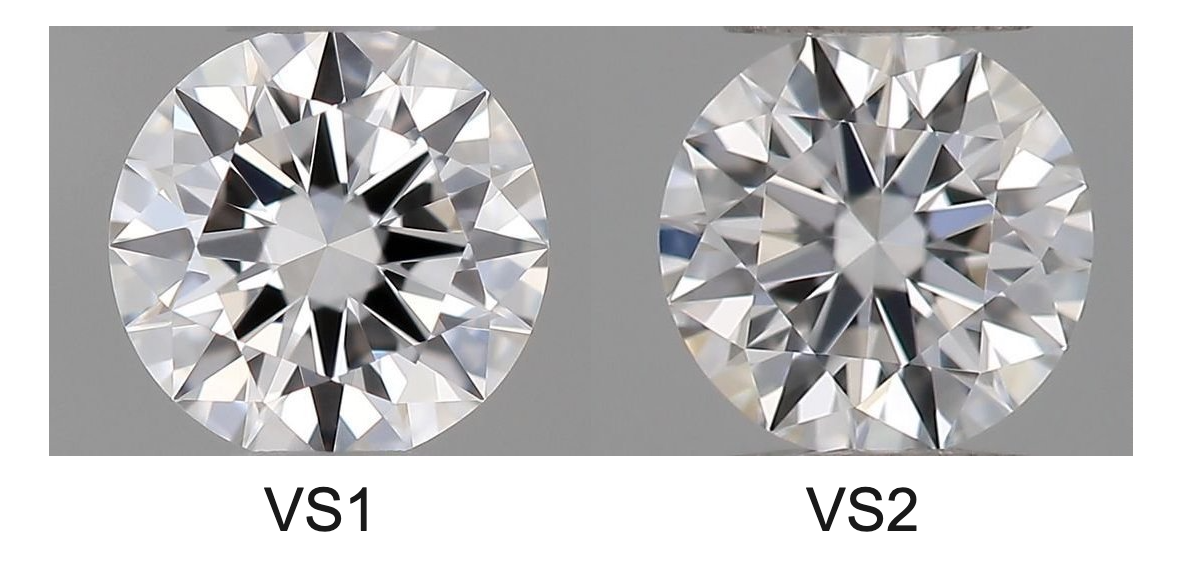Clarity Grades: Flawless Diamonds
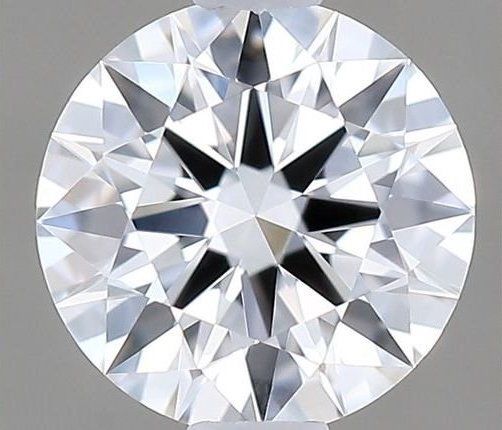
Interested in purchasing a diamond with a Flawless clarity grade? Here's what you need to know.
The Basics Of Clarity
What is Clarity?
There are four main diamond qualities that are observed, identified, and graded in laboratory reports, known as the 4Cs of Diamond. One of those aspects is Clarity.
Clarity refers to the presence of external and internal imperfections present in diamonds.
Those imperfections can affect the stone’s potential for light return. If a diamond is heavily included or presents a high number of clarity imperfections, it might sparkle less and look cloudy, milky, or dull in some way.

Clarity is a critical factor to consider when shopping for diamonds, especially in engagement rings. A high or low clarity grade can significantly impact value and affect the stone’s appearance.
However, it’s also true that some grades will look similar in natural conditions and without magnification tools. We recommend you check out the Diamond Clarity Scale and determine a range you feel comfortable with. This will help you compare similar diamonds and realize how Clarity impacts price.
The Diamond Clarity Scale

Just as it’s the case with Color, Clarity also has a progressive scale to grade diamonds. The Diamond Clarity Scale describes six categories, some of which are divided, for a total of 11 specific grades. Flawless, it’s the highest possible grade a diamond can achieve. And Included 3 is the lowest grade, meaning this would describe a stone with multiple imperfections. Ritani does not carry I1, I2, or I3 diamonds.
It’s worth noting that every diamond is unique and so are their Clarity characteristics. If you compared two diamonds with the same Clarity degree and observed them under magnification——unless they were Flawless—you would find different kinds of inclusions located in multiple areas of the gem.
Clarity Characteristics
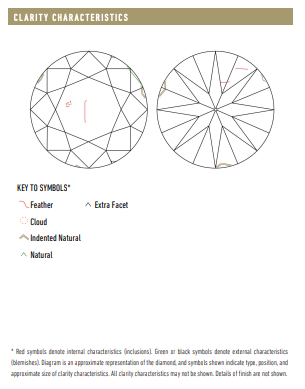
Referring to inclusions and impurities is a bit of an oversimplification. There are multiple kinds of internal and external unwanted defects. These are formally known as Clarity characteristics.
Internal characteristics are called ‘inclusions,’ and external characteristics are known as ‘blemishes.’ Multiple kinds of inclusions and blemishes exist, and a diamond can present different Clarity characteristics at once.
The number, size, and position of inclusions and blemishes are important. When Clarity characteristics are away from the table, they become less visible and, typically, have less impact on the diamond’s reflection and refraction properties.
Flawless Diamonds
What Are Flawless Diamonds?
Flawless is the most desired, highest Clarity grade a diamond can get. For a diamond to be identified as Flawless or FL, it must look clear at 10x magnification. This means that under a 10x loupe or microscope, there are no visible signs of inclusions or blemishes.
Explore Our Inventory Of Flawless Diamonds.
Are Flawless Diamonds Perfect?
Flawless diamonds aren’t necessarily perfect. Clarity is only one out of four other quality factors. Although a Flawless diamond is likely to have high Color and Cut grades, not every FL diamond will fit your definition of perfect. For example, a Flawless diamond could still receive a K color grade and a Good cut grade, traits that some may find undesirable.
You should also understand that there are no absolute pure and perfect diamonds. There’s a reason why the Flawless grade is assessed under 10x magnification and not 50x or 100x. Diamonds were formed under extreme pressure and heat conditions under the Earth’s crust in a process that took hundreds of millions of years. It’s completely possible to observe imperfections in a Flawless diamond under extremely high magnification.
How Expensive Are Flawless Diamonds?
Flawless diamonds are incredibly scarce. It’s estimated only 0.5% or less diamonds are Flawless. This makes FL grade diamonds much more expensive than other high Clarity grades.
There is no average price for FL diamonds; this will depend on each stone’s Carat weight and Color grade. As of August 20222, you can find a 1.00 carat Round Cut, D Colorless, Flawless diamond starting at $18,399 on our website.
Are Flawless Diamonds Worth It?
This depends on your very own particular expectations, needs, and budget. If you’re looking for a diamond with investment potential, a larger diamond with Flawless Clarity, is your best bet.
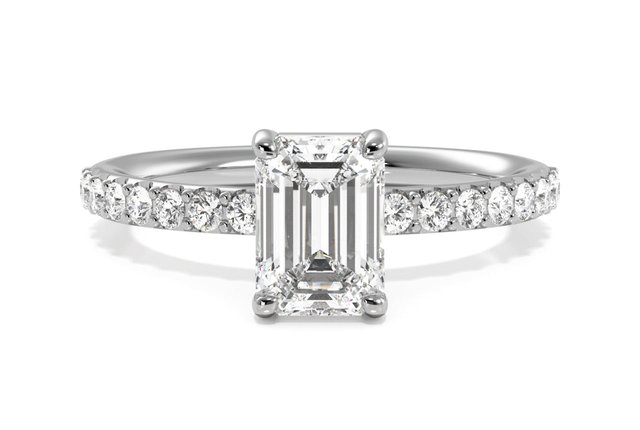
Higher Clarity grades are preferable for certain diamond shapes. Step Cuts, like the Emerald or Asscher, have a large window (top facet) that allows for a very clear view into the interior of the diamond. Clarity characteristics are more notorious in these cuts, which is why you might want to choose a Flawless diamond if you’re looking at stones over 1 carat.
However, if you’re looking to maximize your budget, you might want to focus on Color or Carat weight. Diamonds have a high refractive index, meaning they sparkle a lot. It’s very hard to distinguish between Clarity grades with the naked eye. This is why we typically recommend diamonds with a VS2 clarity grade or better since they are eye-clean and more affordable.
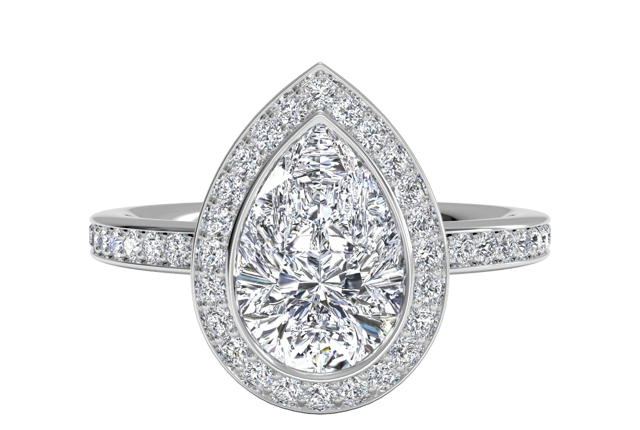
If you really wish for a Flawless diamond, consider other shapes rather than the Round cut. The Round Brilliant cut has been in high demand for many years; this and the fact that cutting this shape incurs carat weight loss makes it the most expensive shape of all. Other Brilliant cuts like the Pear, Oval, and Marquise also display fantastic brilliance and fire and are much more affordable than the round cut.
Flawless vs. Internally Flawless
Internally Flawless (IF) diamonds are the second highest grade on the Diamond Clarity Scale. What separates them from Flawless diamonds is the presence of external clarity characteristics. Internally Flawless diamonds, as their name indicates, have no internal imperfections. The blemishes or external characteristics in an IF diamond are very minimal and superficial, but they can be seen under 10x magnification.
Frequently Asked Questions
How much does a 1ct Flawless diamond cost?
A 1ct Flawless diamond can cost anywhere from $4,000 to $18,000 depending on the stone's shape, cut, color, fluorescence, and other quality factors.
How much is a Flawless 4 carat diamond?
The price of a 4-carat Flawless diamond will vary on many factors such as the diamond's shape, cut, and color grades. Expect to spend anywhere from $100,000 to $280,000 or more on a 4-carat Flawless diamond.
How much is a 3 carat Flawless diamond worth?
There is no exact answer to this since carat and clarity are not the only factors that will determine the value of a diamond. A 3-carat Flawless diamond can cost anywhere from $50,000 to $120,000 or more.
Are Flawless diamonds rare?
Yes! This is part of the reason why they are so expensive. Fewer than 0.5% of diamonds receive a Flawless clarity grade.
Are lab grown diamonds Flawless?
Flawless lab-grown diamonds are extremely rare - even rarer than natural Flawless diamonds. Due to the laboratory growing process, it is very difficult to produce a Flawless lab diamond. At Ritani, the highest clarity grade we offer for lab-grown diamonds is Internally Flawless. Learn more about how lab diamonds are made here.
Need help choosing the right diamond? Contact one of our non-commissioned gemologists today.
